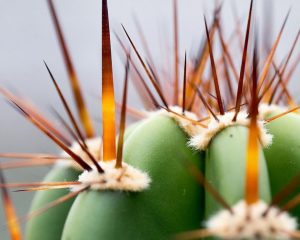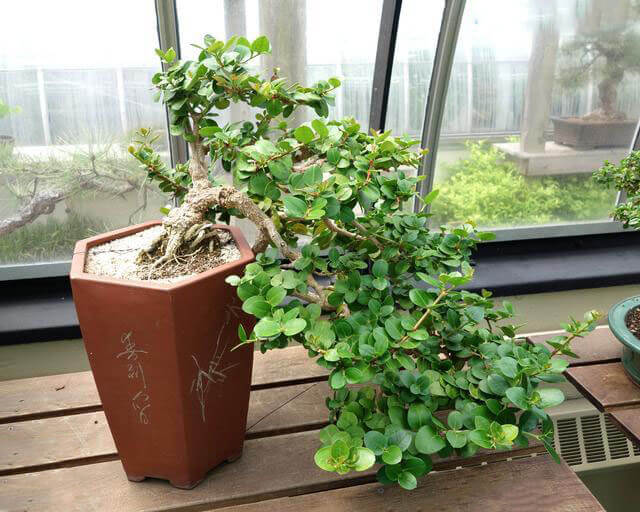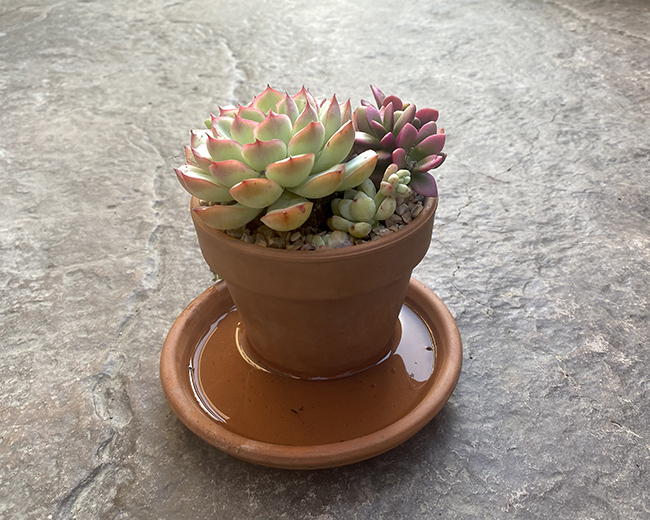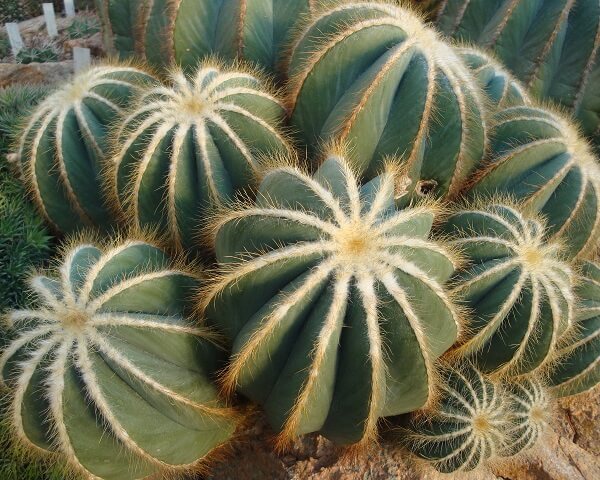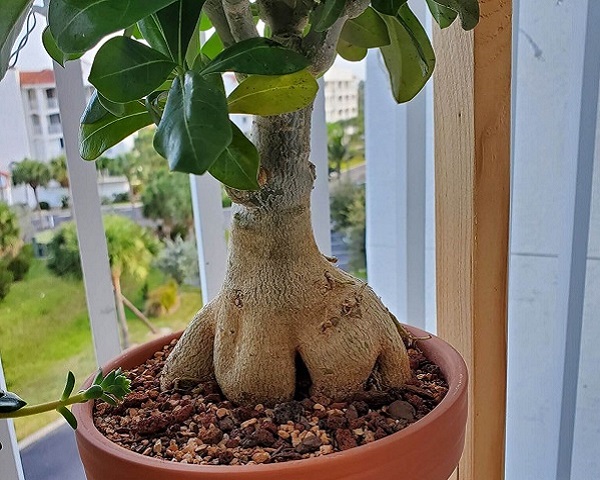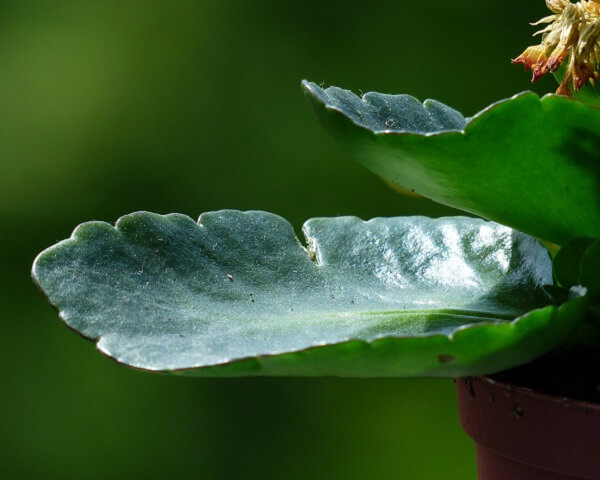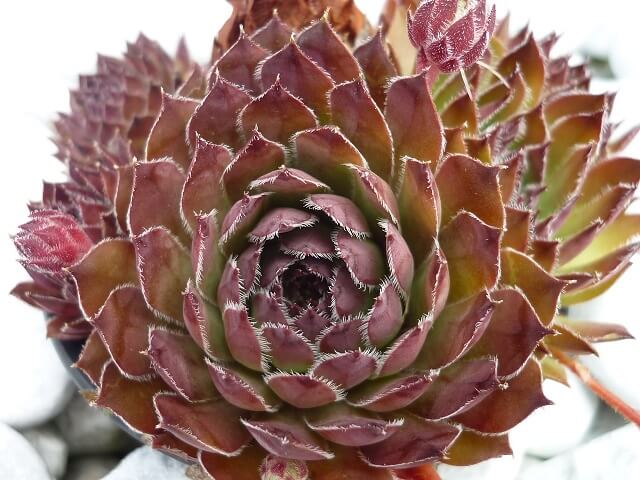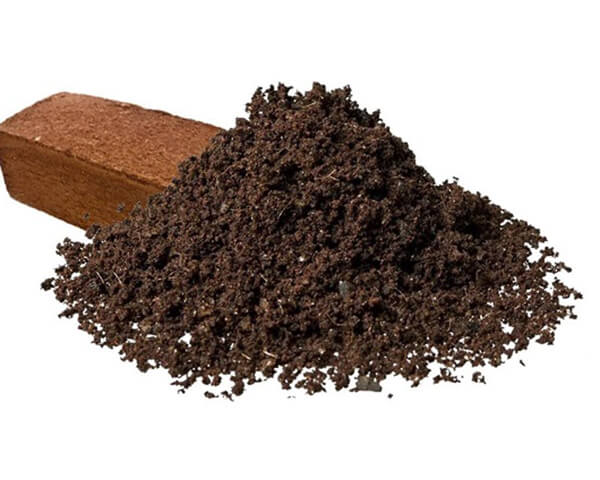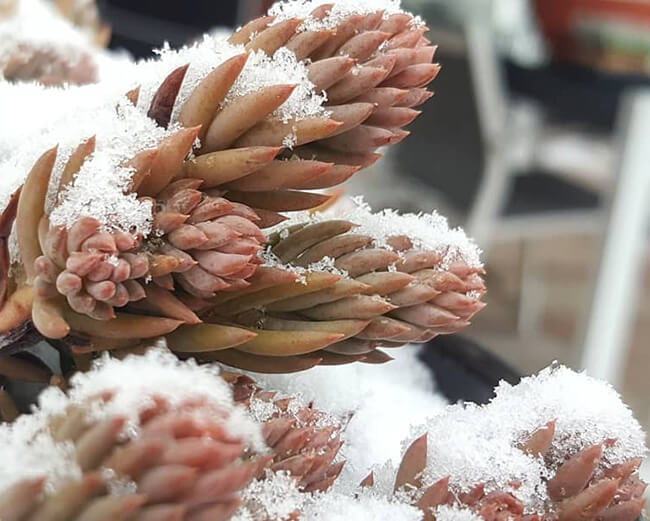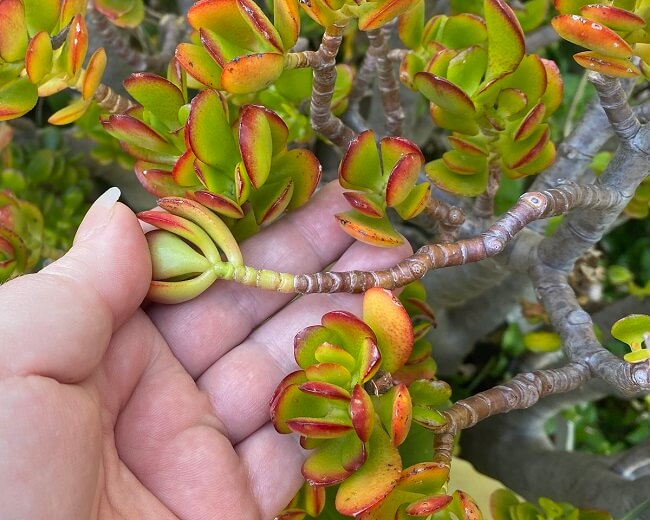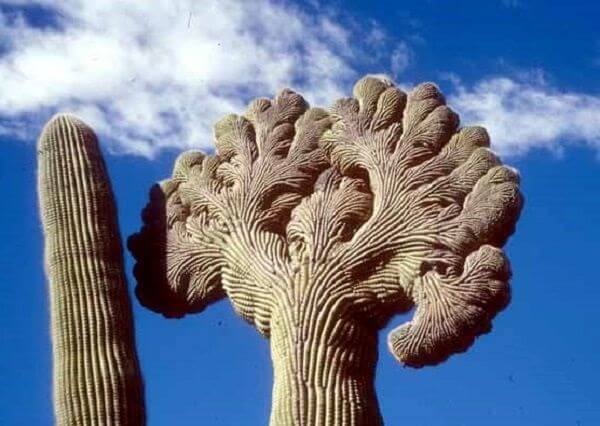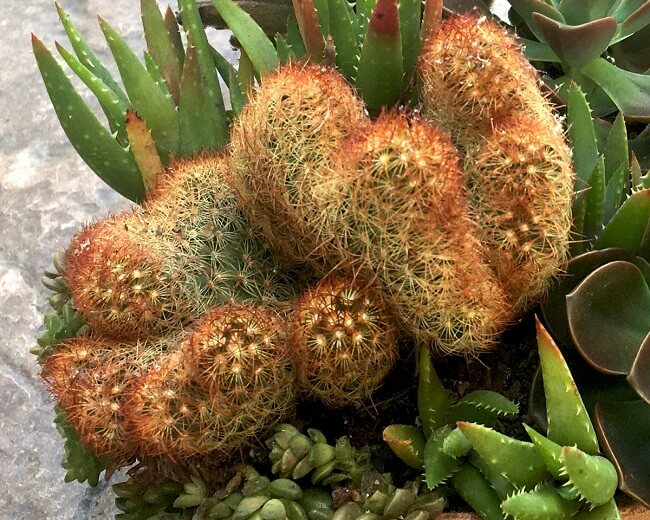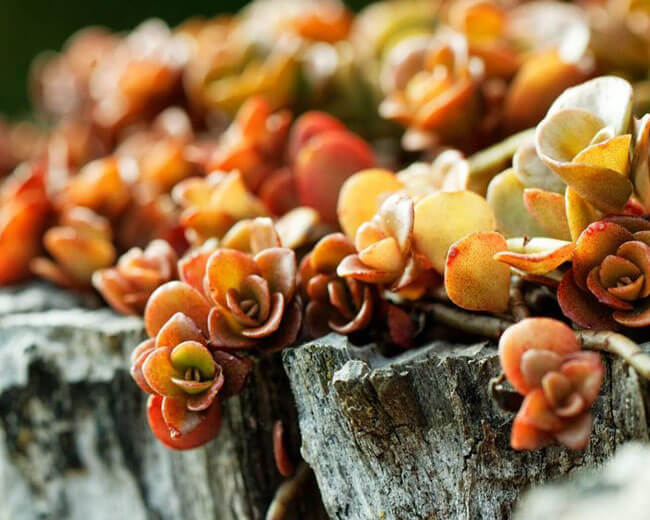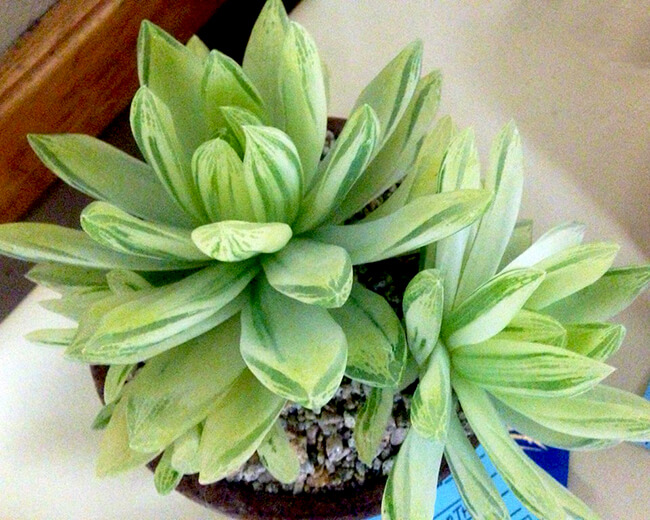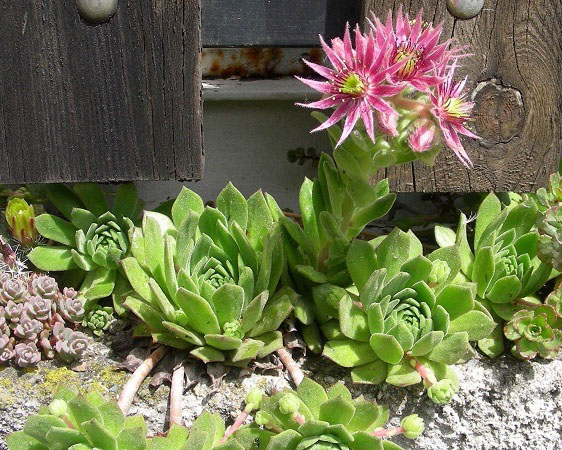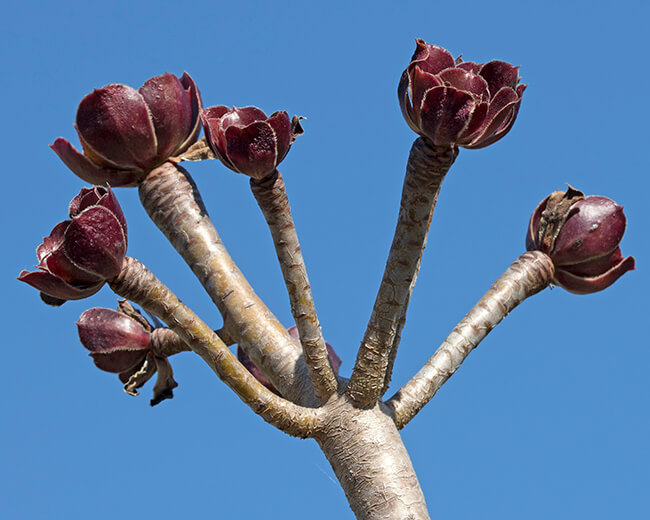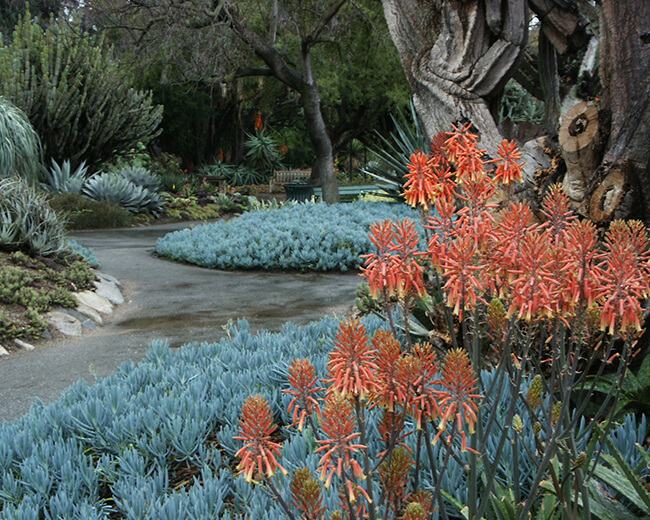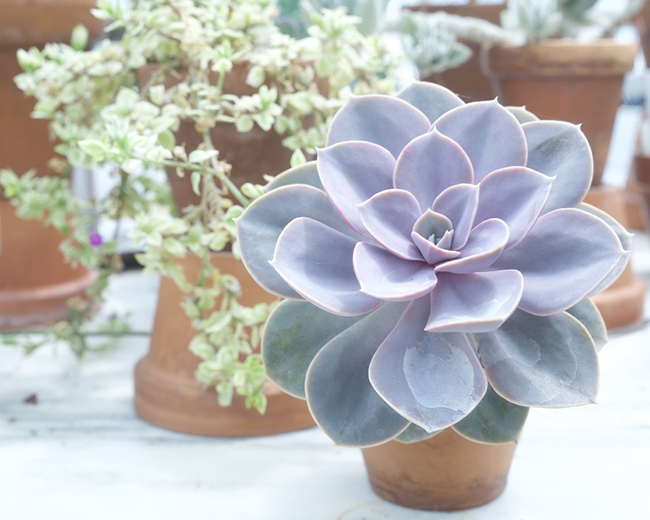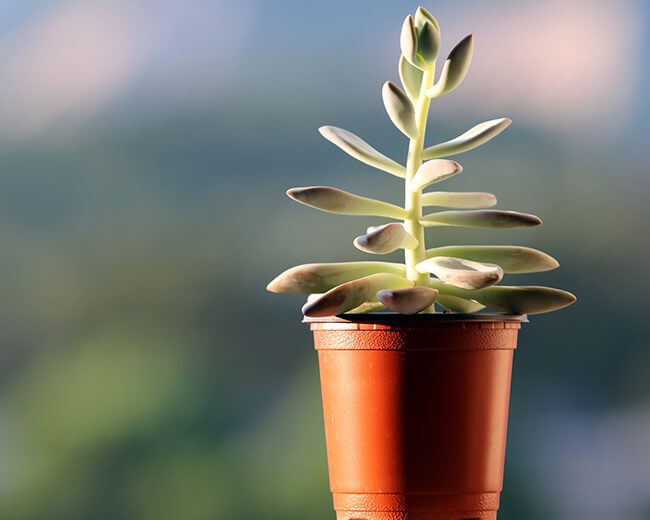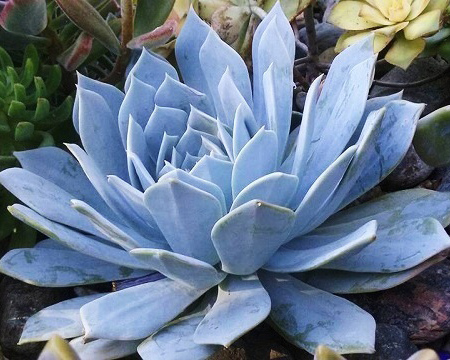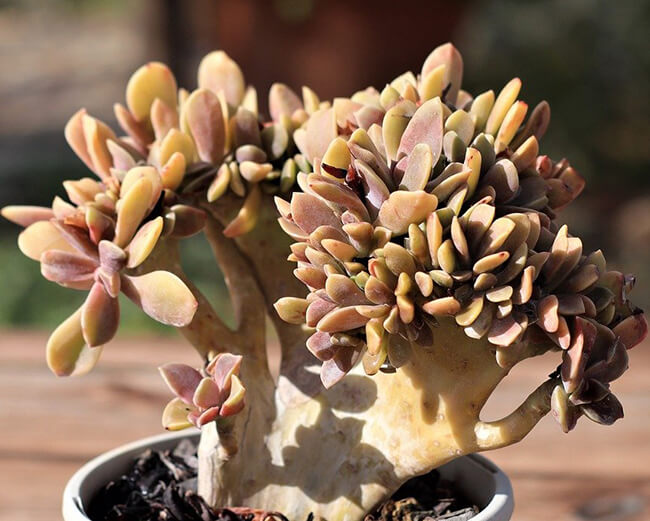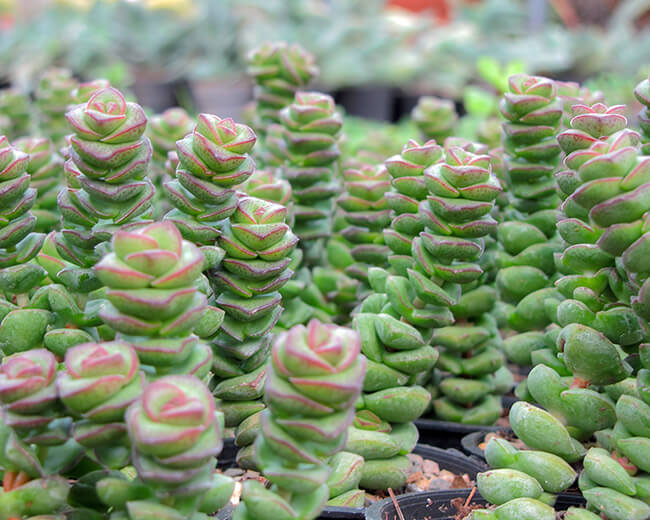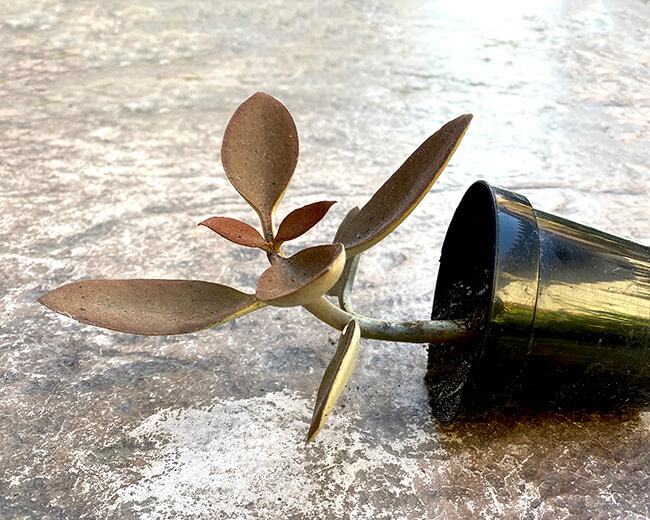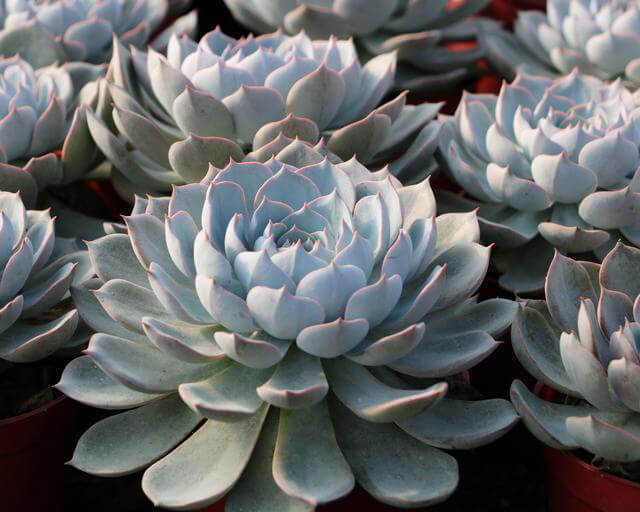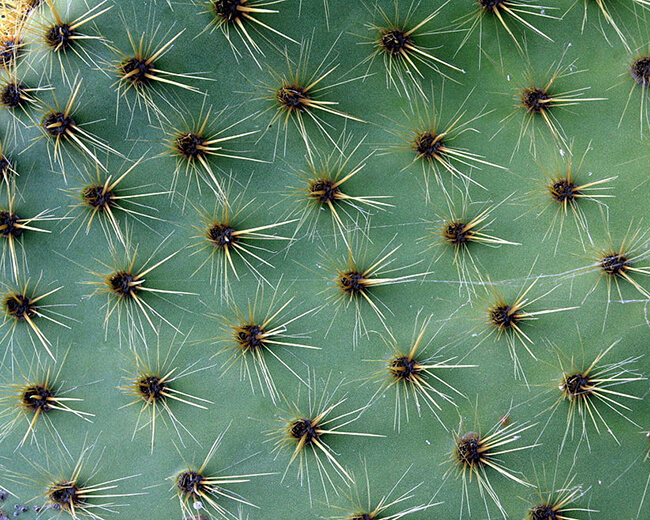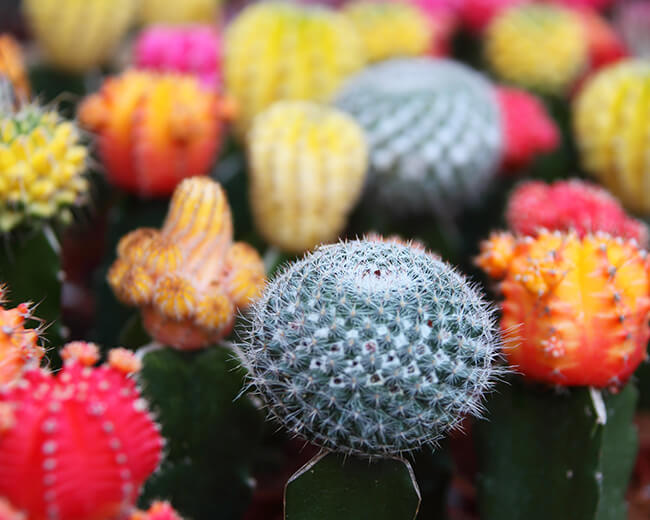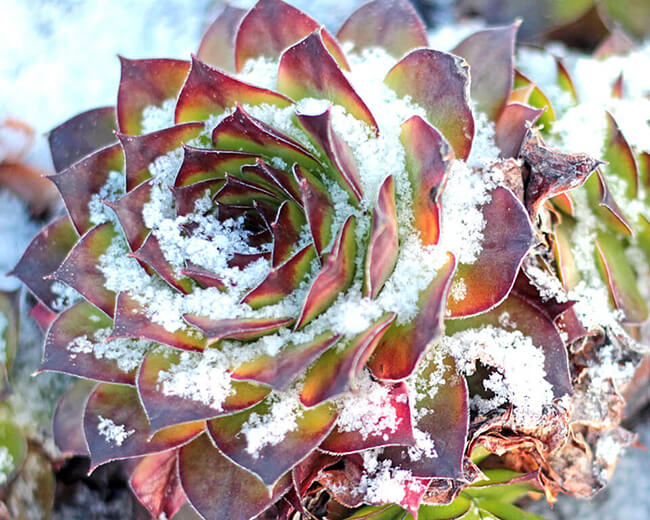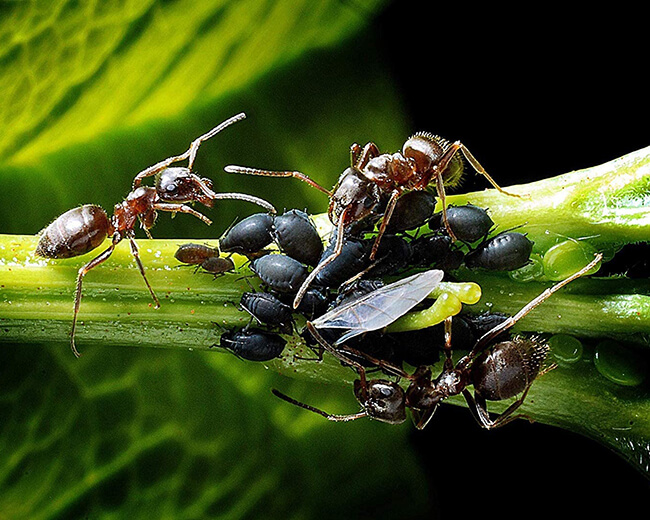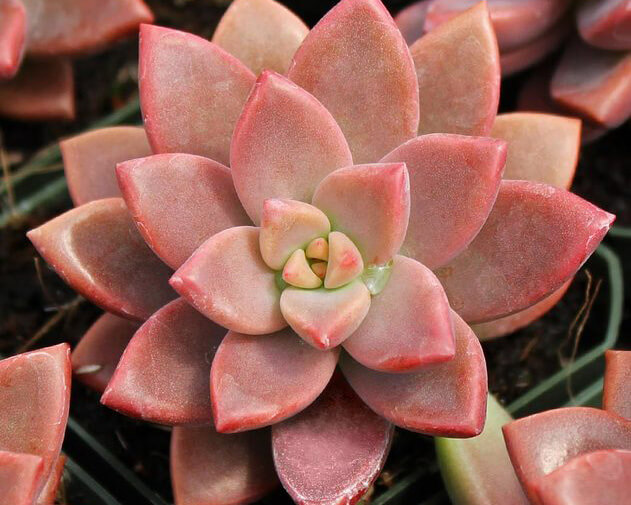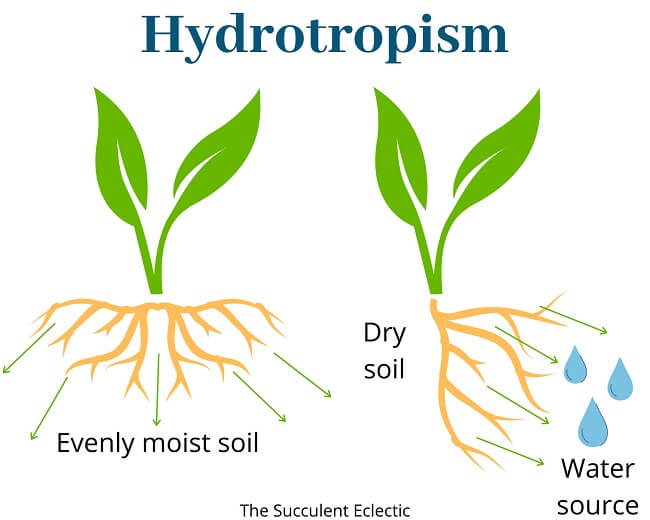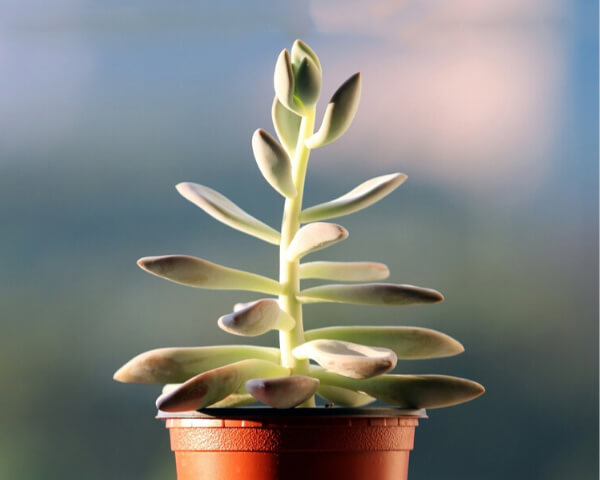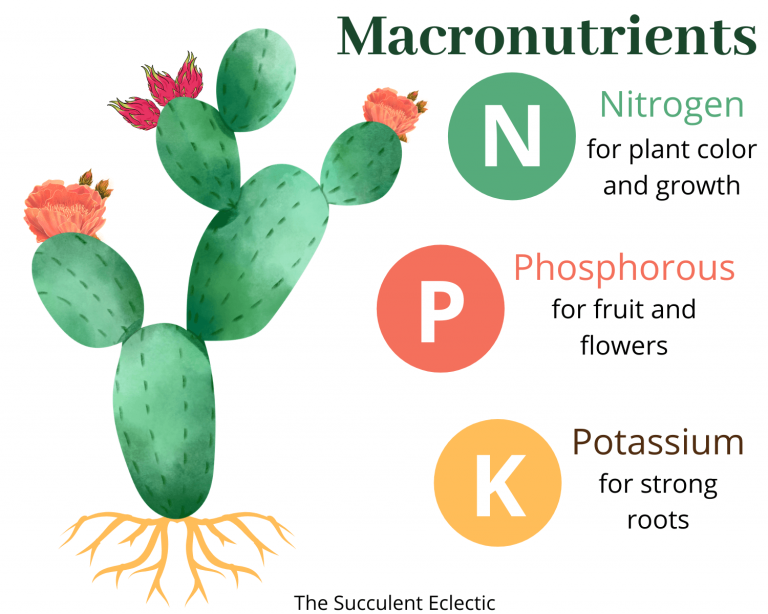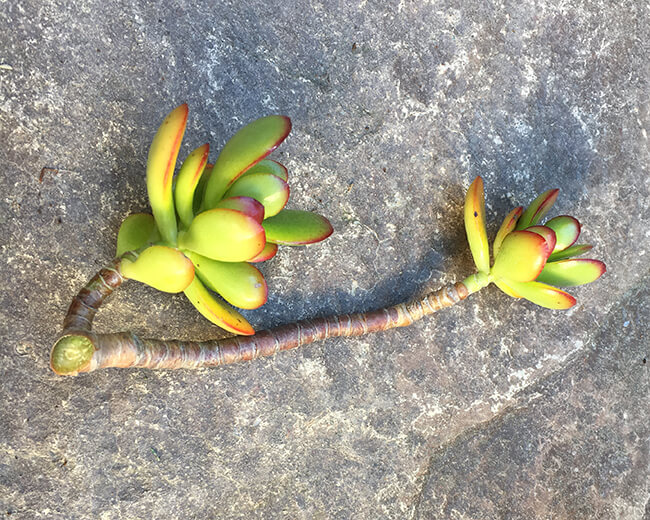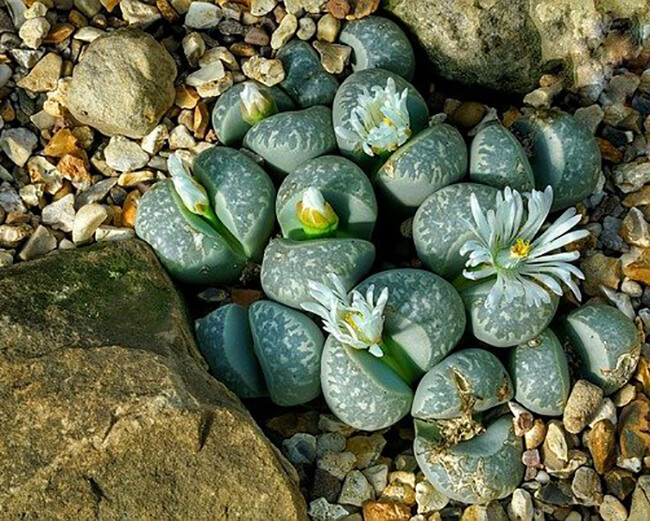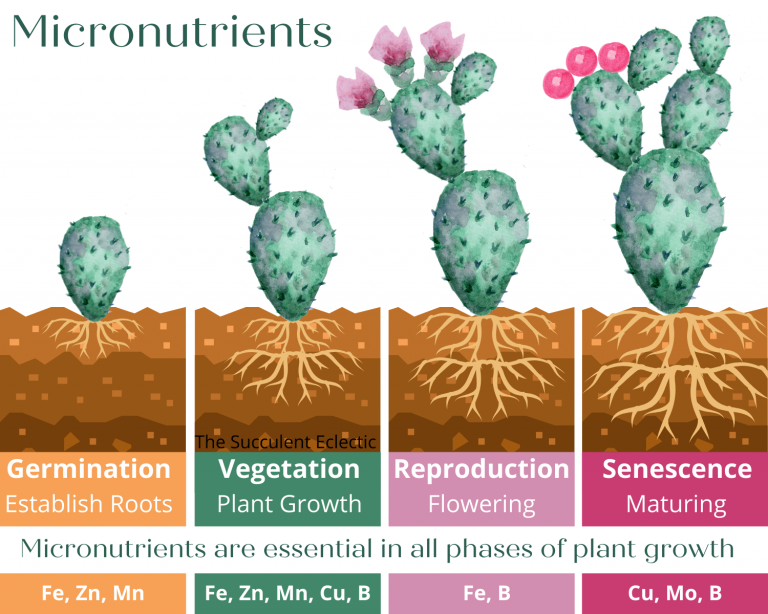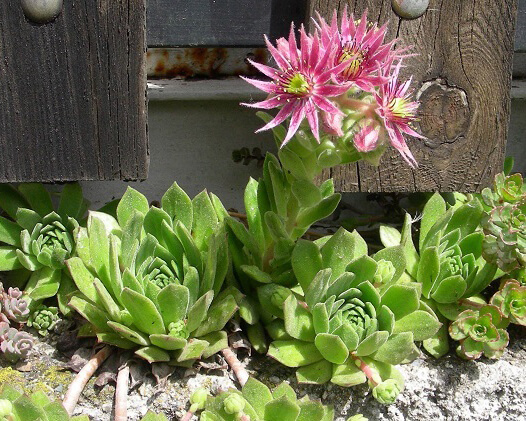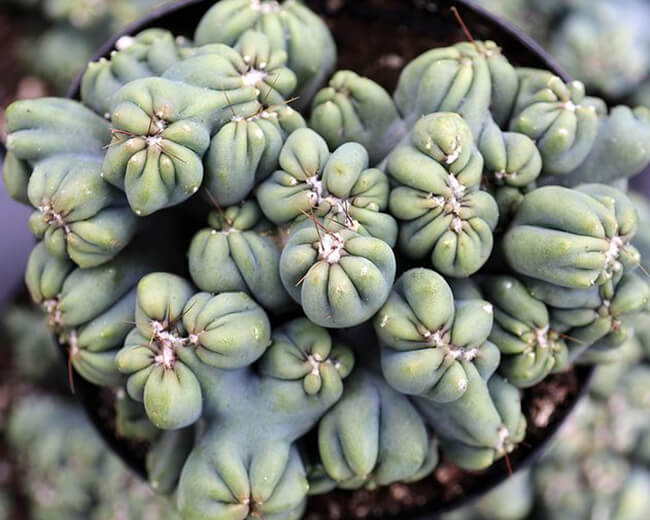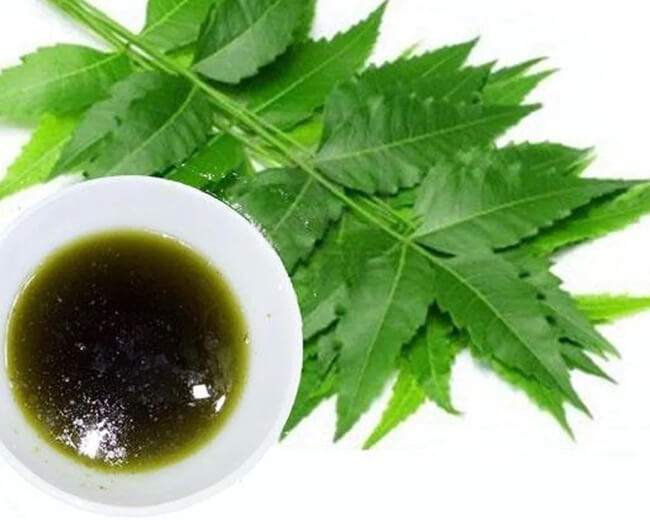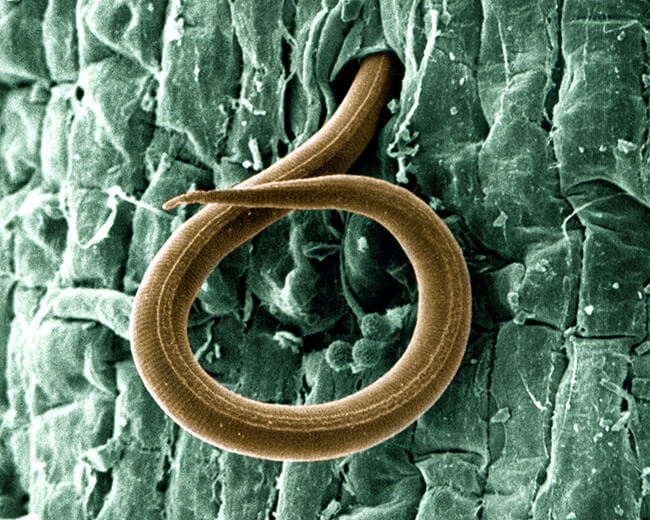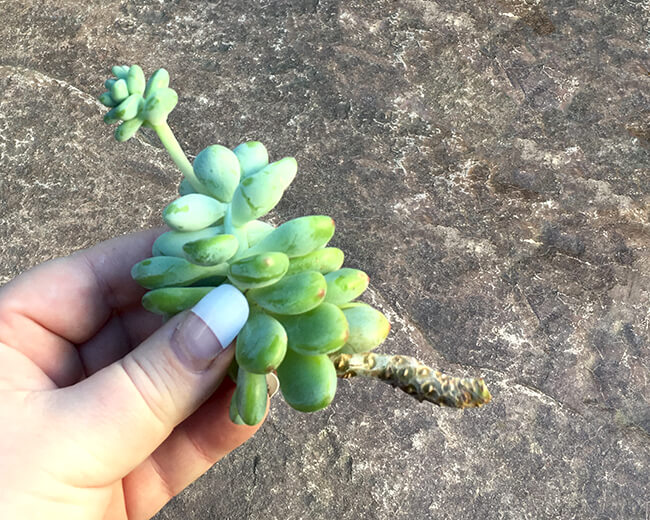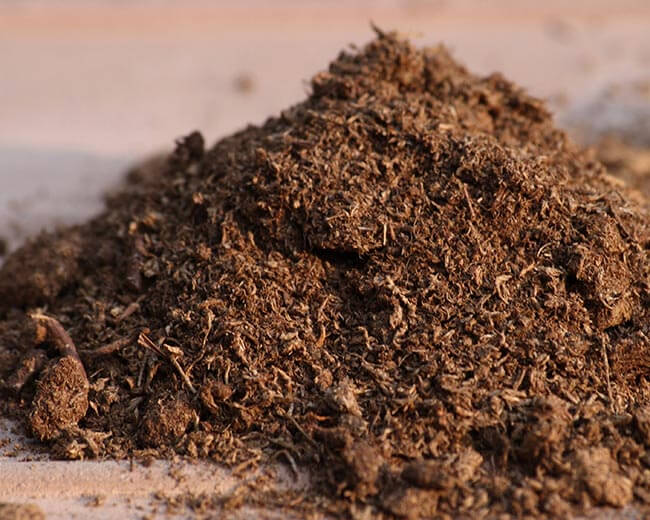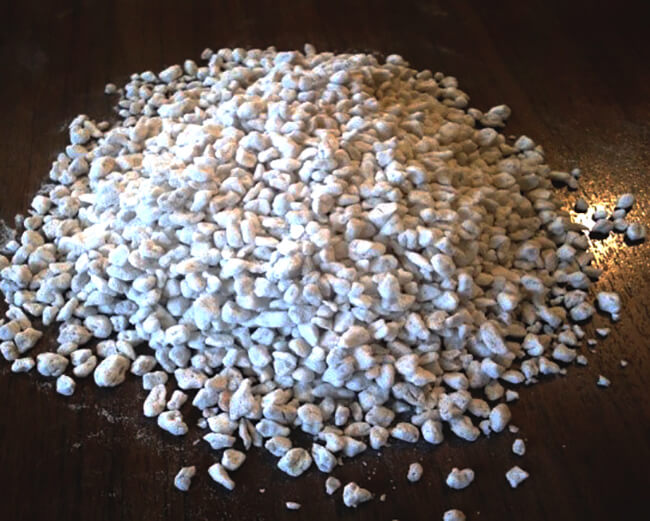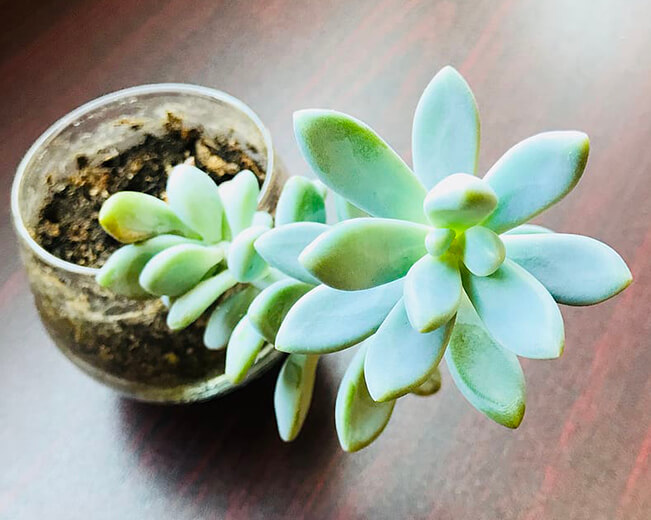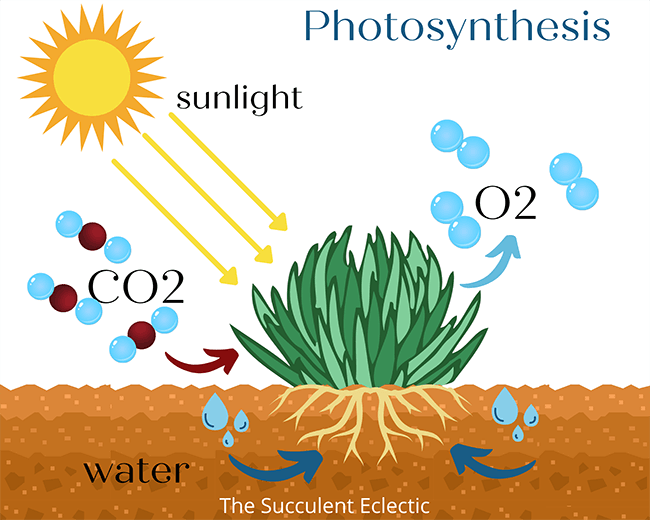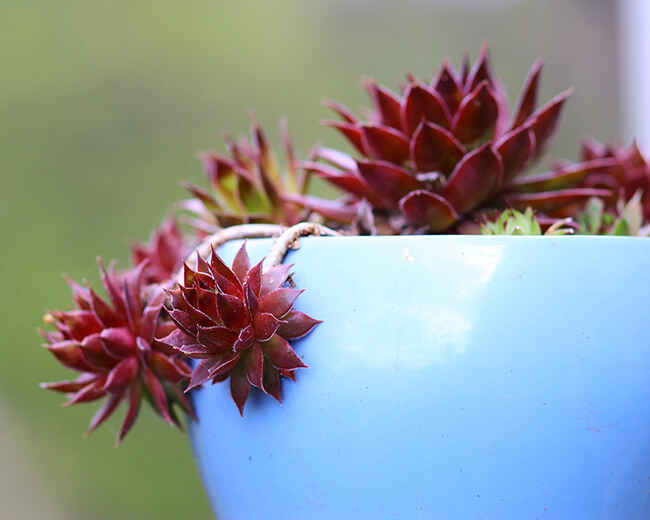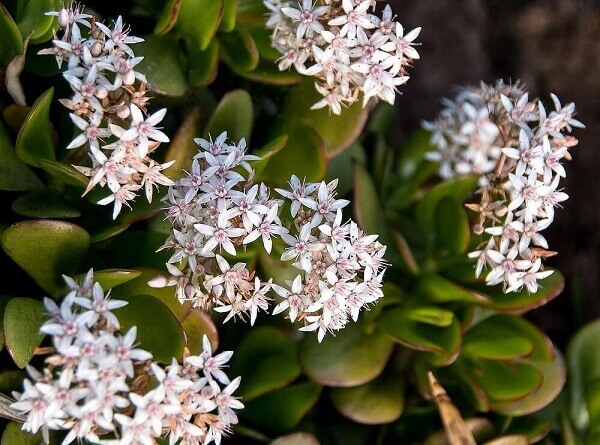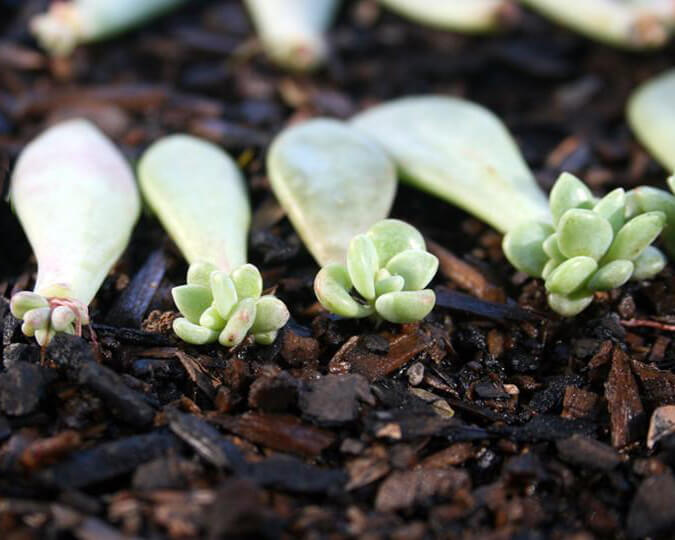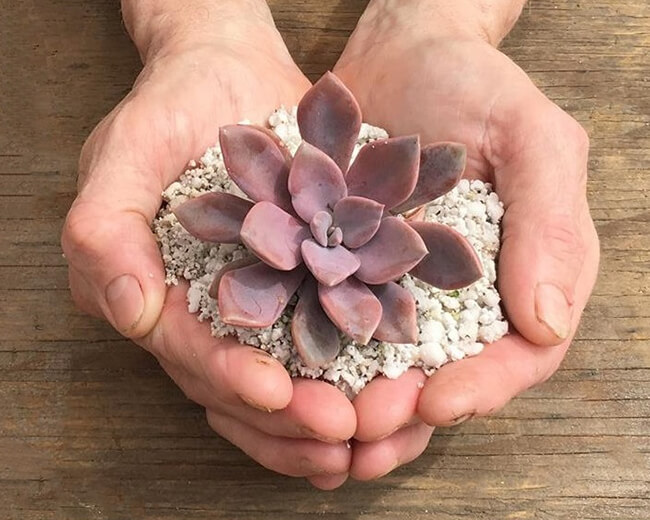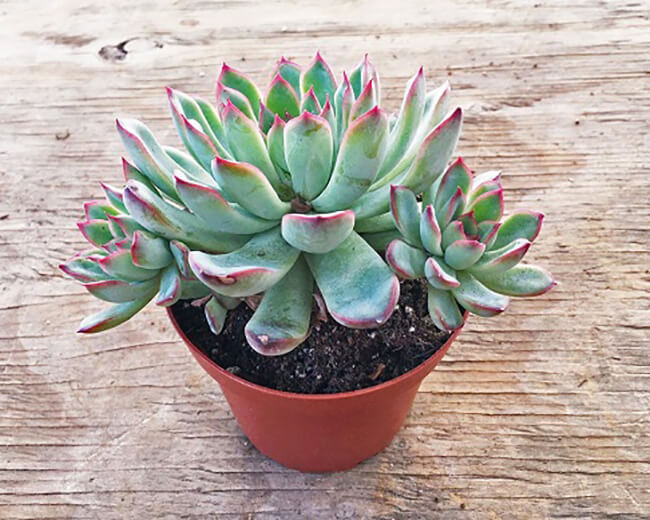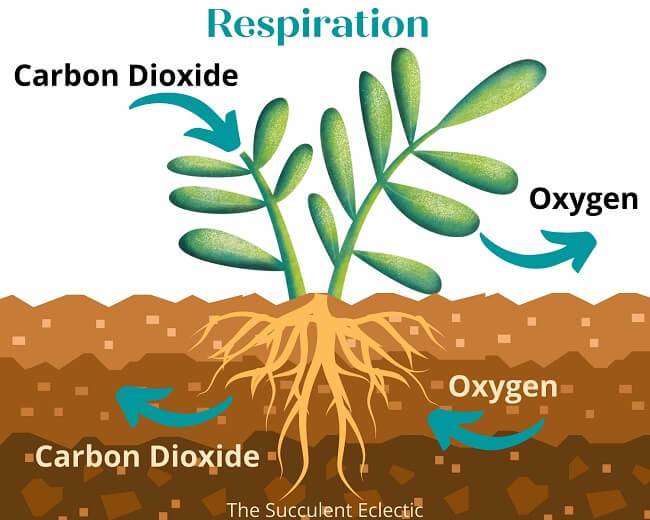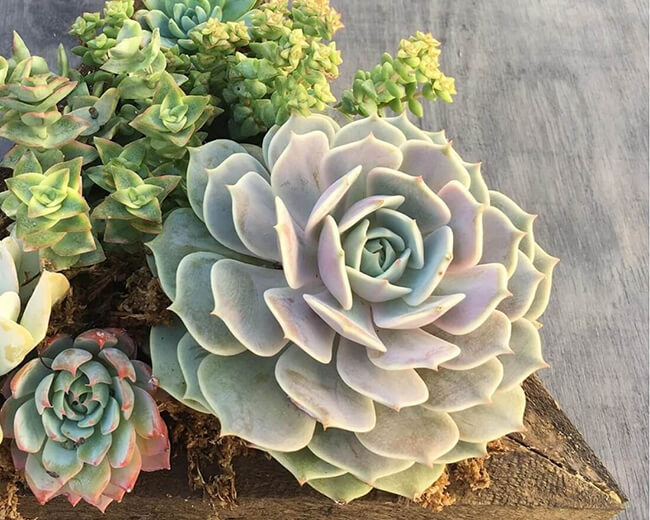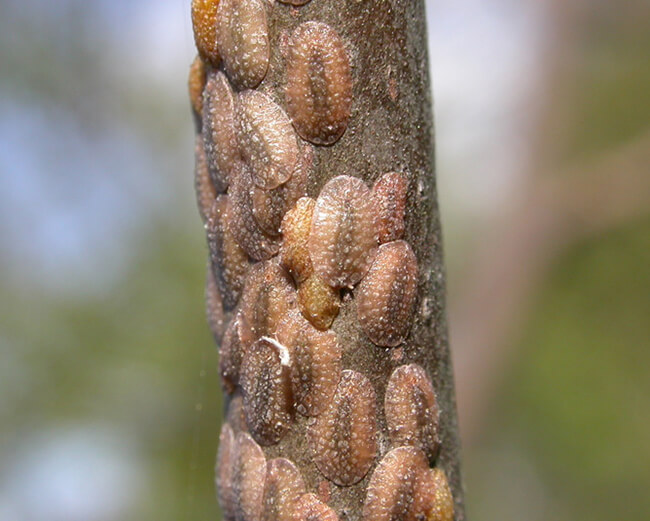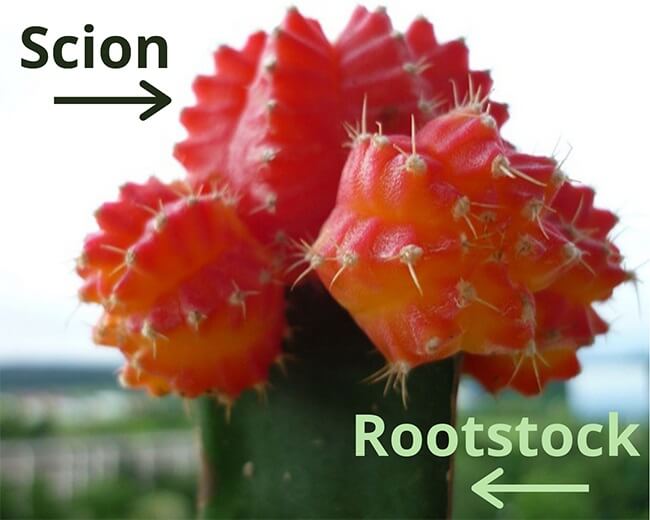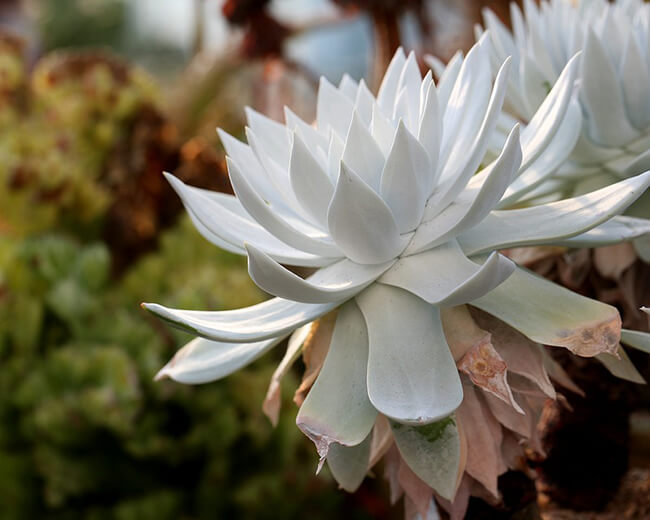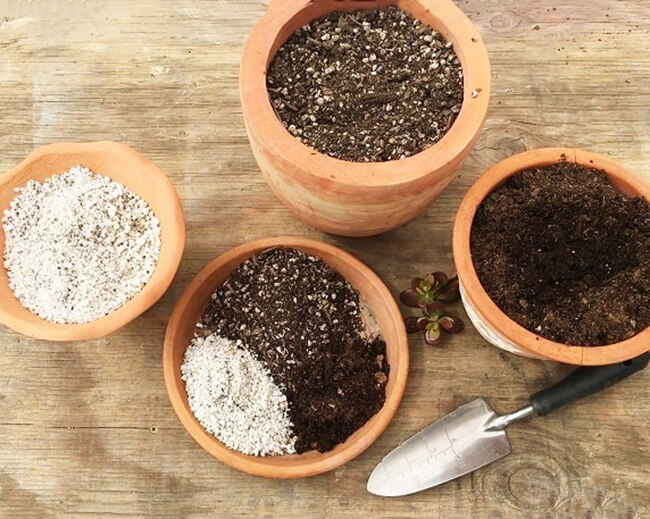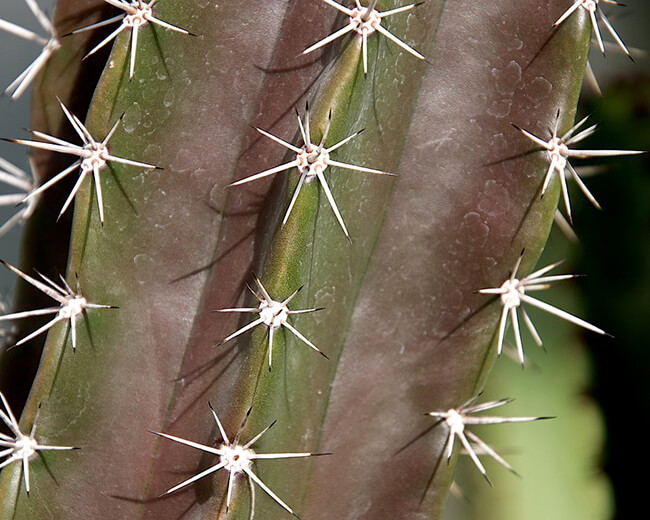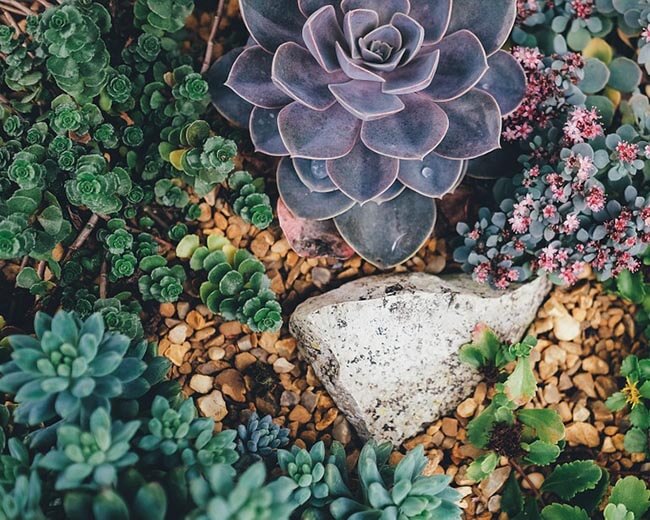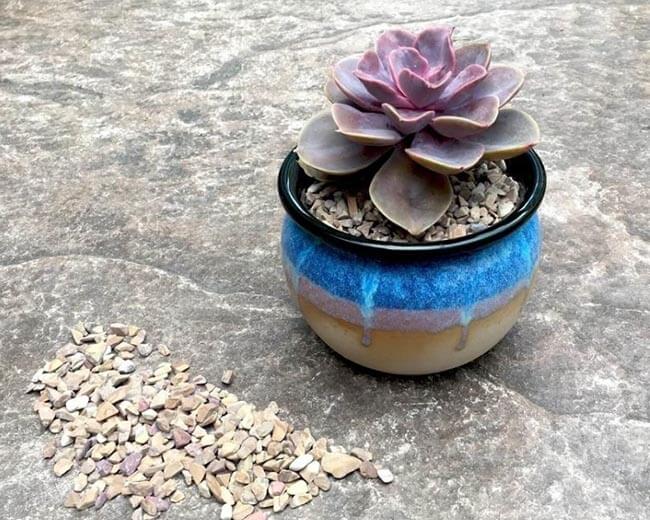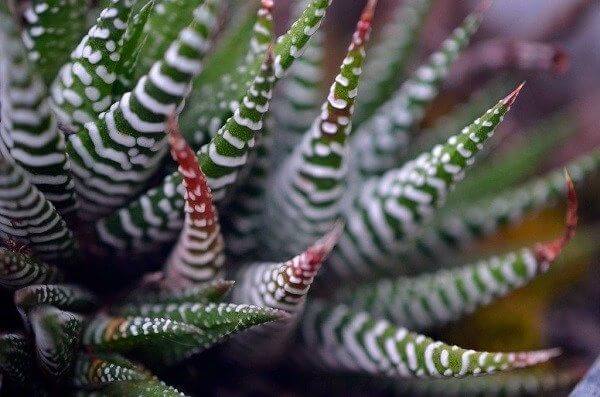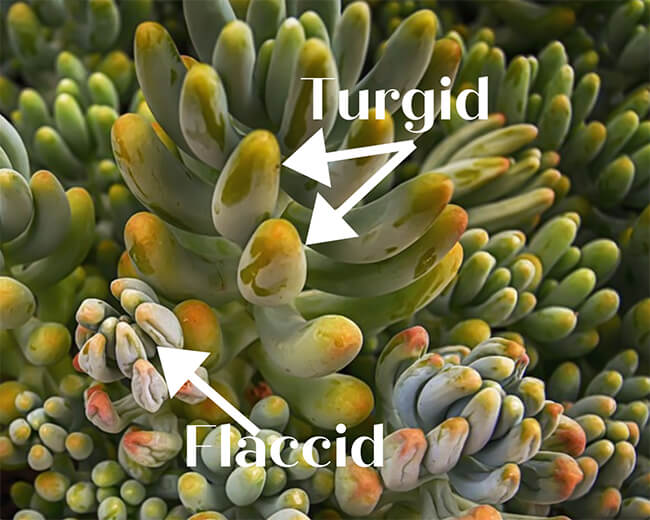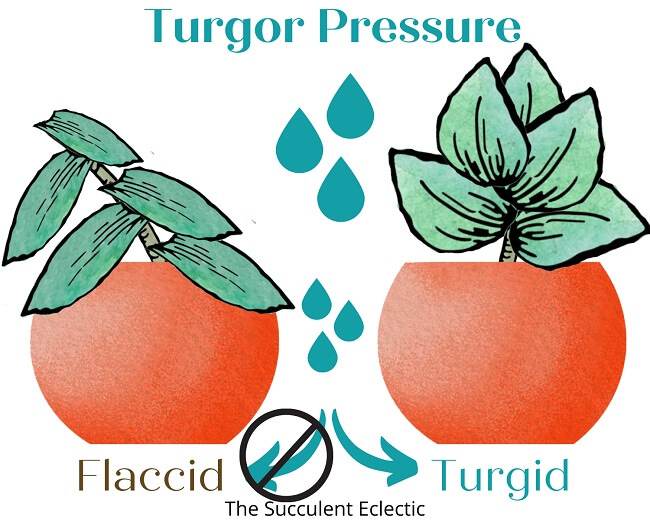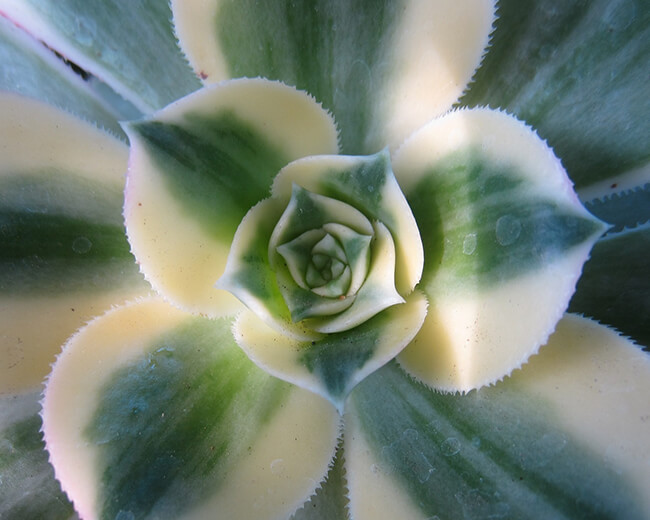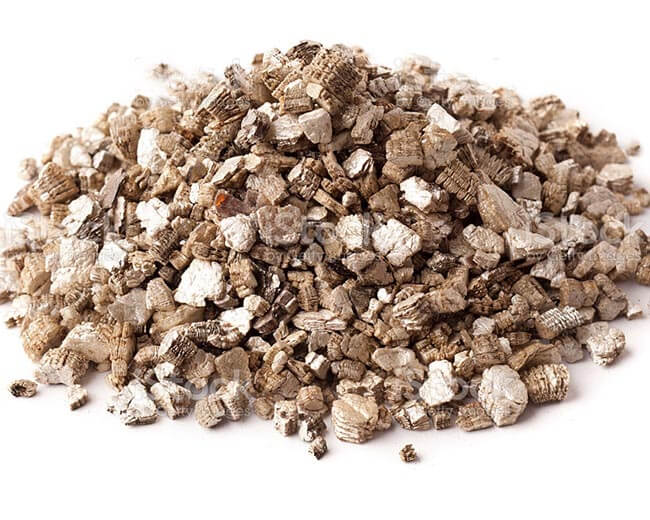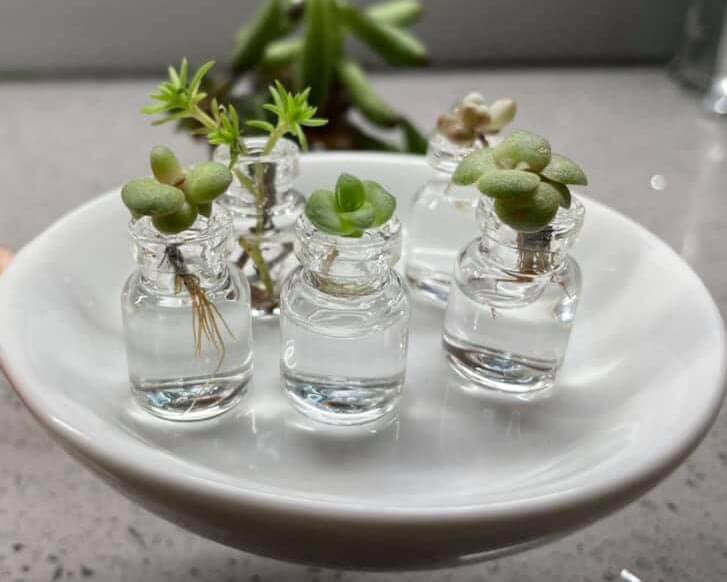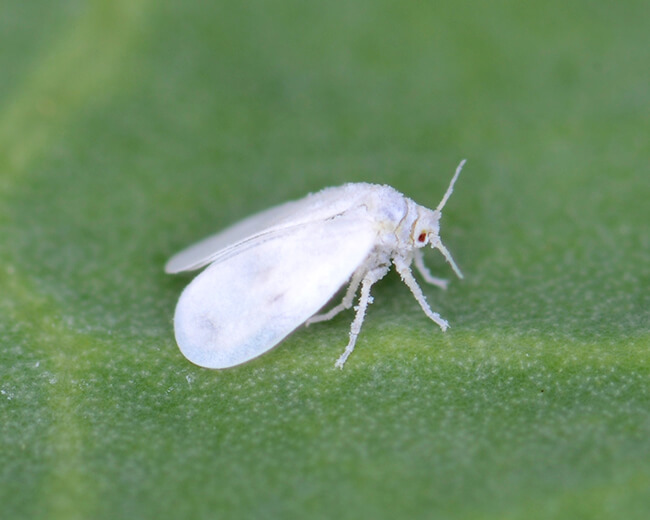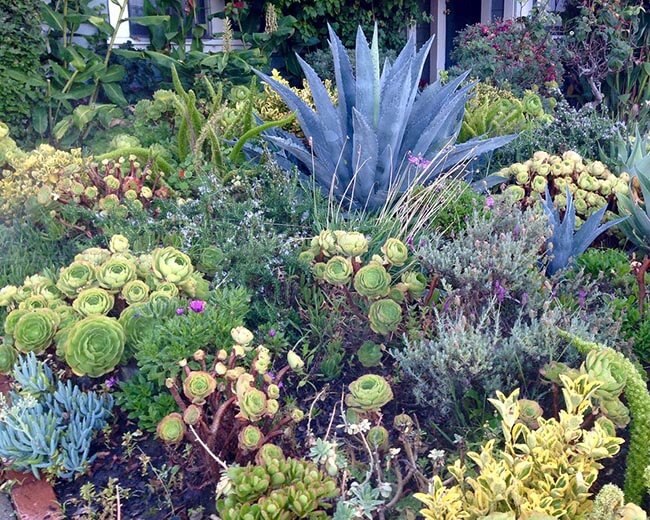This illustrated glossary of succulent terms is intended to be a practical guide for succulent-growers. This is not an exhaustive botanical dictionary, but a list of terms and definitions to aid you in your succulent journey. Click an image to see more detail.
Aerial roots: [AIR-ee-yal roots]
Aerial roots form above the ground and may appear on the stem or the leaves of a succulent.
Areole: [Air-ee-ol]
A defining characteristic of cacti, an areole is a modified branch that appears as a small round bump that produces spines, blooms and shoots. All cactus plants have areoles.
Bonsai: [BAHN-zeye]
Japanese art form growing an ornamental plant in a small pot, shaping and dwarfing the plant to resemble a mature, windswept tree. Some woody succulent like Portulacaria and Crassula ovata are particularly well-suited to bonsai.
Cactus: [KACK-tuhs] plural Cacti [KACH-teye]
A cactus is a succulent plant with a thick, fleshy stem, no leaves, with areoles that usually produce spines and dramatic flowers. All cacti are succulents, but not all succulents are cacti.
Chlorophyll: [KLOR-uh-fill]
Chlorphyll is the pigment in plants that gives them their green color. Chlorphyll absorbs sunlight, so the plant can photosynthesize light, water and carbon dioxide into sugars and oxygen. All life on Earth depends upon photosynthesis, which requires chlorphyll.
Chlorosis: [Klor-OH-siss]
Chlorosis describes the yellowing of leaf tissue due to a deficiency of chlorophyll.
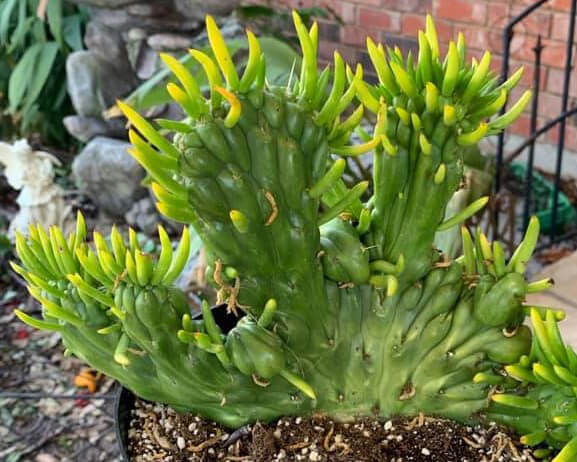
Ciliate hairs: [SILL-ee-uht hairs]
Ciliate hairs form a fringe of tiny hairs along the margin of leaves. All Sempervivum and some Aeonium have ciliate hairs.
Cold hardy: [KOHLD HAR-dee]
Cold hardy refers to a plants ability to survive the cold, typically below freezing temperatures. Some succulents are so cold hardy, they can survive temperatures of -30°F (-34.4°C)!
Crested: [KRESS-ted]
Crested succulents and cacti exhibit unusual folding and undulating growth along a single line. Crested growth results from an injury or genetic defect at the apical meristem where new growth forms.
Cristata is a Latin word meaning crested. It is part of the scientific name of any crested succulent. For instance, this cactus is a Mammillaria elongate cristata ‘Copper King’.
Cryoprotectants: [KRI-oh-pro-TECK-tants]
Cryoprotectants are specialized proteins some plants and animals produce that prevent moisture within their cell walls from freezing. In cold-hardy succulents, these are often colorful pigments.
Death blooms: [death bloom]
Some succulents are monocarpic, meaning they bloom just once in their lifetime. Some people refer to these blooms as “death blooms”, however, the mother plant that dies is usually replaced by many pups.
Dormant: [DOOR-ment]
Many succulents go dormant in either summer or winter. Dormancy is a time of minimal metabolic activity, similar to hibernation in bears. Some dormant succulents look dormant like this Aeonium arboreum. Most succulents don’t change their appearance when dormant.
Epicuticular wax: [Ep-i-cyoo-TIH-cyoo-lar wax]
Epicuticular wax is a natural, waxy coating some plants develop on leaves, stems and fruits. It provides protection from water, insects, dirt, moisture loss and UV rays. It appears as a whitish film, sometimes called farina, farina bloom or glaucous leaves.
Etiolated: [EE-tee-oh-late-ed]
A plant is etiolated when it grows very tall, thin and stretched as a result of getting insufficient sunlight. It is stretching to reach the sunlight.
Farina: [Fah-REE-nah]
Farina is another word for epicuticular wax, a natural, whitish film on the leaves of some succulents. It provides protection from water, insects, dirt, moisture loss and UV rays.
Fasciated: [FAY-shee-ay-ted]
Fasciated is another term for a crested succulent, describing the flattened, ribbon-like growth of the crested plant.
Glaucous: [GLAH-kuss]
Glaucous can mean the dull, greyish green or blue color of some succulents or the whitish film of epicuticular wax.
Glochids: [GLAH-kids]
Glochids are short, find, hair-like spines on the aereoles of Opuntia or prickly pear cactus. Most glochids have backward barbs that resist removal.
Grafting: [GRAFF-ting]
Grafting is a horticultural procedure where the tissues of two unrelated plants are joined to grow together, creating a single plant. The upper part of the combined plant is called the scion. The lower part is called the rootstock. Some succulents, like moon cactus are
Hardy: [HAR-dee]
A plant’s hardiness describes its ability to withstand harsh conditions. When applied to succulents, a “hardy succulent” is typically one that can survive below-freezing temperatures. A succulent’s hardiness rating tells you exactly how cold the succulent can survive.
Honeydew: [HUH-nee-doo]
Honeydew is a sugary, sticky liquid excreted by aphids and some scale insects on the leaves and stems of plants as they eat. Honeydew attracts ants and ants even “farm” aphids and scale for their honeydew. Finding stickiness on your plants is an indication of insect activity.
Leaf windows: [Leef WIHN-doz]
Leaf windows are translucent structures on the outside of leaves that allow sunlight to penetrate the leaf before reaching the chlorophyll that photosynthesizes the light into nutrition for the plant. They are a strategy to maximize photosynthesis while protecting the plant from the sun.
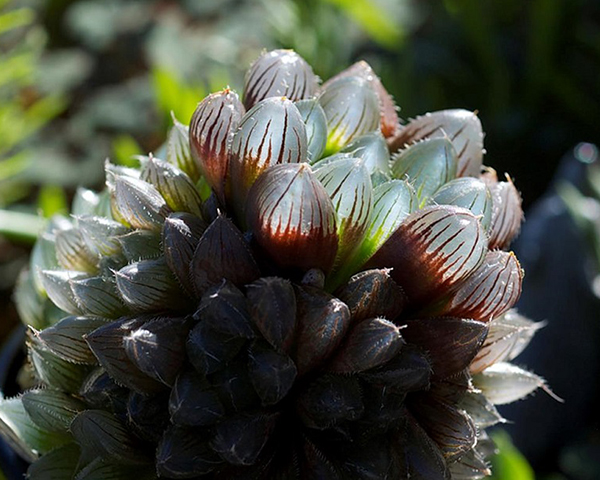
Leggy: [LEG-gee]
“Leggy” is a common term used to describe a plant that has grown tall and stretched as it seeks more sunlight. The technical term is etiolated. May also be used to refer to Graptopetalum hybrids or Aeonium where mature plant has developed a long stem with the rosette at the very tip.
Mealybug: [MEE-lee-bug]
Mealybugs are small, soft-bodied scale insects covered with a white, powdery wax that resembles meal. They leave white, cottony masses on the leaves and stems of plants as they feed by sucking the sap from the plants. Mealybugs often produce honeydew.
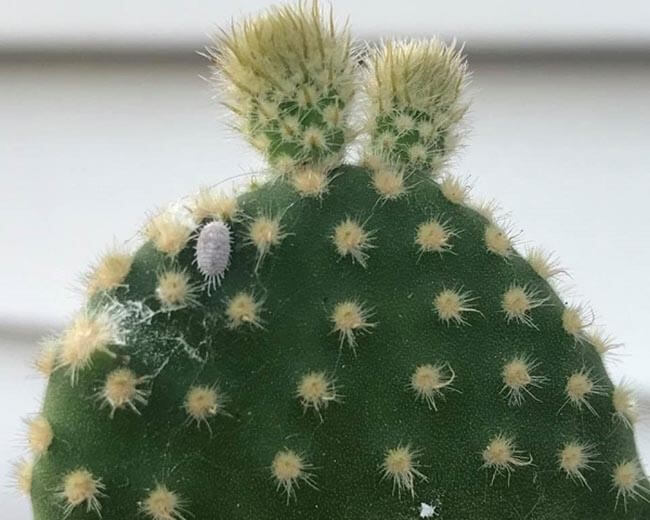
Mesembs: [MEH-zemz]
Succulent species of the Aizoaceae family that resemble stones are sometimes called mimicry plants or mesembs. Mesembs include Lithops, Fenestraria, Pleiospilos, Anacampseros and more.
Monocarpic: [MAH-no-KAR-pick]
Monocarpic plants are those that bloom just once in their life cycle before they die. Some bloom within several years, others take several decades. All typically form multiple offsets or baby plants before the mother plant dies.
Monstrose: [MAHN-stros]
The term monstrose describes a genetic defect or mutation that causes deformed. lumpy, knobby growth randomly over an entire plant. Monstrose cactus and succulents are highly sought after.
Mutation: [Mu-TAY-shun]
A mutation is a change in the DNA sequence of an organism. This change can occur internally, within the genes themselves, or from environmental factors like exposure to UV light. Cresting, monstrose and variegation are examples of plant mutations.
Node: [NODE]
Nodes are the small points on a plant’s stems where the leaves attach. A node is a point of cellular activity, where new growth can become roots or branches. It’s important to identify nodes when pruning or rooting stem cuttings.
Offsets: [OFF-sets]
Succulent offsets are the baby succulents that form at the base of the mother plant. The offset may be divided from the mother, or it will eventually separate on its own, to grow into a separate plant. Synonym: pups
Peat moss: [PEET mahss]
Peat moss is dried, dead fibers formed when organic matter decomposes in peat bogs. It is widely used as a soil amendment in gardening. Peatlands store 33% of the earth’s soil carbon. Coco coir is a better choice for gardeners, succulents and the environment.
Perlite: [PUR-lite]
Perlite is a naturally occurring volcanic glass that is incredibly lightweight. Perlite is often used as a soil amendment to improve drainage. A common issue with perlite is that it “floats” up through the soil with watering. Pumice is a better choice.
Plug: [PLUHG]
A plug is a well-rooted cutting that’s been grown in a tray, but is sold without a pot. The soil is encased in roots. This is a safe way to grow healthy succulents. Shipping plugs is generally less expensive than shipping potted plants.
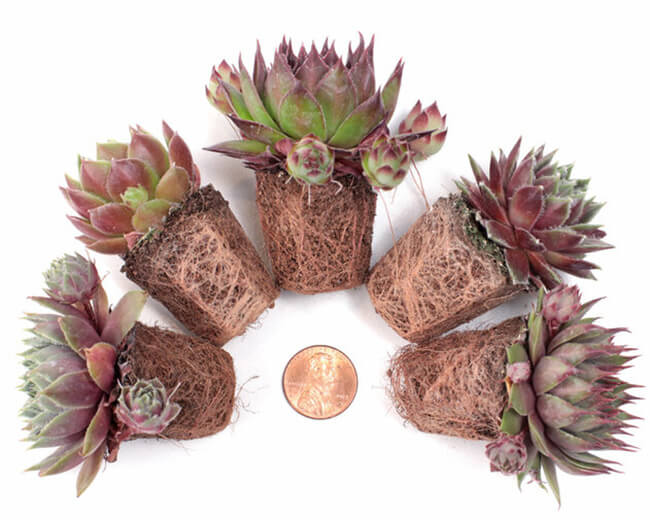
Polycarpic: [PAH-lee-KAR-pick]
Most succulents are polycarpic, meaning they flower many times in the life cycle of the plant. Monocarpic plants are those that bloom just once in a plant’s life.
Propagation: [Prah-puh-GAY-shun]
Propagation is the process of breeding more plants from one or a few. Succulent propagation methods include sowing seeds, stem cuttings, leaf propagation and division.
Pumice: [PUH-miss]
Pumice is a very lightweight, volcanic rock that is mined for use in farms and gardens. Pumice is naturally rich in micronutrients that are exceptional for healthy succulents. This is my preferred soil amendment for improving drainage.
Pups: [PUPPS]
Succulent pups are the baby succulents that form at the base of the mother plant. The pup may be divided from the mother, or it will eventually separate on its own, to grow into a separate plant. Synonym – offsets
Respiration: [Ress-per-AY-shun]
In plants, respiration is the process where plants covert the glucose formed during photosynthesis into energy that fuels the plant’s growth, flowering, fruiting and propagation. During respiration, plants take in carbon dioxide from the air and release oxygen. Roots take in oxygen, releasing CO2.
Rhizome: [RYE-zohm]
A rhizome is a modified stem that grows horizontally, underground. They develop roots and new plants from their nodes. Only some plants, like Sansevieria, form rhizomes. When dividing plants with rhizomes, you may need to cut through the rhizome to separate the plants.
Rosette: [ROH-zett]
A rosette succulent is one whose leaves are arranged in concentric circles around a common center, looking like a rose. The rosette form optimizes each leaf’s exposure to sunlight, while also funneling captured moisture to the center of the root zone.
Scale: [SCAYL]
Scale is the common name for a large, diverse group of insects that feed by sucking on the juices of plants like succulents. Scale are slow moving, with no visible legs or antenna. They form multiple, oval bumps on stems or leaves. Many excrete honeydew.
Stolon: [STOH-luhn]
Stolons are modified, horizontal stems that enable a plant to spread and set roots away from the primary plant. Sempervivum offsets are connected to the mother plant by stolons.
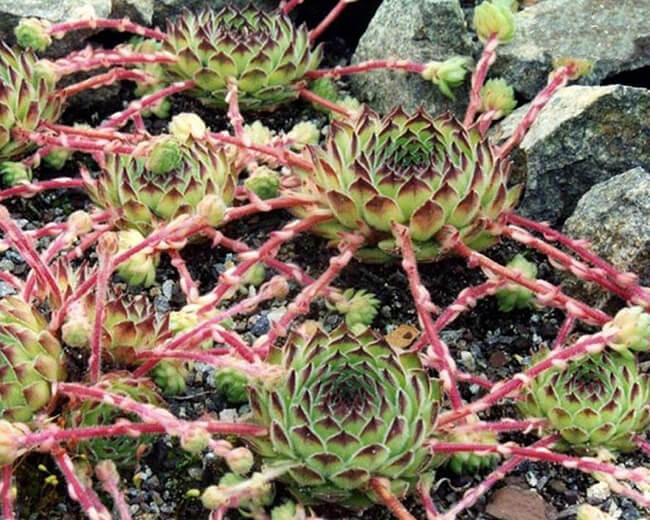
Top Dressing: [TAHP DRESS-ing]
In gardening, top dressing is any material spread atop the soil. For succulents, top dressing is a layer of inorganic material like pebbles, seashells, gravel or sand that covers the soil. Top dressing offers a number of benefits for succulents.
Transpiration: [Tran-spir-AY-shun]
Transpiration is the process of water movement through a plant. Water is taken up through the roots, travels to all the cells of the plant, and is released to the environment through the leaves. Plants lose more than 90% of their water through transpiration.
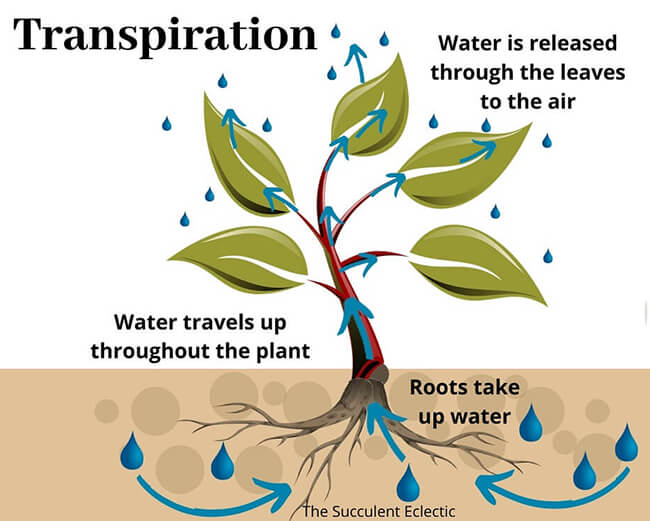
Tubercles: [TOO-ber-cuhls]
A tubercle is a naturally-occurring small bump, outgrowth or protuberance. The bright white bumps on Haworthia fasciata are tubercles.
Variegation: [VEHR-ee-eh-GAY-shuhn]
Variegation is the appearance of two or more colors within the leaf, or sometimes stem, of a plant. Variegation is the result of the uneven distribution of chlorophyll within the leaf. Variegation can appear as stripes, spots, margins, spatters, blotches, shadings and more.
I will continue to add terms to this illustrated glossary of succulent terms. I hope it will help you in your succulent journey!
Because life is just better with succulents!

